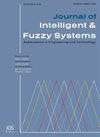基于深度学习的多公路森林卷积网络对毁林驱动因素进行分类
IF 1
4区 计算机科学
Q3 COMPUTER SCIENCE, ARTIFICIAL INTELLIGENCE
引用次数: 0
摘要
世界范围内的森林砍伐率逐年恶化,最终对人类和环境造成各种严重影响。为了跟踪森林保护活动的成功,建立一个可靠的森林监测系统是至关重要的。森林状况的变化非常难以手工标注,因为涉及的边界很小且很微妙,特别是在毗邻居民区的地区。以前的森林监测系统失败了,因为它们依赖于低分辨率的卫星图像和基于无人机的数据,这两者都有固有的局限性。大多数政府机构仍然使用手动注释,这是一种缓慢、费力且昂贵的数据记录方式。本研究的目的是通过使用深度学习建立一个多公路森林卷积网络来自动检测森林边界,从而监测森林边界随时间的变化,从而找到解决这些问题的方法。这里最初使用动态分解卡尔曼滤波器对数据进行整理。然后可以对数据进行扩充。然后利用多模态判别质心特征聚类对增强图像特征进行融合。然后利用迭代初始播种算法(IISA)对所选区域进行分割。最后,利用多公路森林卷积网络(PHFCN)对森林砍伐的程度和驱动因素进行分类。整个实验以6048张Landsat-8卫星子图像为数据集,在MATLAB环境下进行。结果表明,所提出的方法比现有的方法具有更满意的性能。本文章由计算机程序翻译,如有差异,请以英文原文为准。
Classifying drivers of deforestation by using the deep learning based poly-highway forest convolution network
The worldwide deforestation rate worsens year after year, ultimately resulting in a variety of severe implications for both mankind and the environment. In order to track the success of forest preservation activities, it is crucial to establish a reliable forest monitoring system. Changes in forest status are extremely difficult to manually annotate due to the tiny size and subtlety of the borders involved, particularly in regions abutting residential areas. Previous forest monitoring systems failed because they relied on low-resolution satellite images and drone-based data, both of which have inherent limitations. Most government organizations still use manual annotation, which is a slow, laborious, and costly way to keep tabs on data. The purpose of this research is to find a solution to these problems by building a poly-highway forest convolution network using deep learning to automatically detect forest borders so that changes over time may be monitored. Here initially the data was curated using the dynamic decomposed kalman filter. Then the data can be augmented. Afterward the augmented image features can be fused using the multimodal discriminant centroid feature clustering. Then the selected area can be segmented using the iterative initial seeded algorithm (IISA). Finally, the level and the driver of deforestation can be classified using the poly-highway forest convolution network (PHFCN). The whole experimentation was carried out in a dataset of 6048 Landsat-8 satellite sub-images under MATLAB environment. From the result obtained the suggested methodology express satisfied performance than other existing mechanisms.
求助全文
通过发布文献求助,成功后即可免费获取论文全文。
去求助
来源期刊

Journal of Intelligent & Fuzzy Systems
工程技术-计算机:人工智能
CiteScore
3.40
自引率
10.00%
发文量
965
审稿时长
5.1 months
期刊介绍:
The purpose of the Journal of Intelligent & Fuzzy Systems: Applications in Engineering and Technology is to foster advancements of knowledge and help disseminate results concerning recent applications and case studies in the areas of fuzzy logic, intelligent systems, and web-based applications among working professionals and professionals in education and research, covering a broad cross-section of technical disciplines.
 求助内容:
求助内容: 应助结果提醒方式:
应助结果提醒方式:


